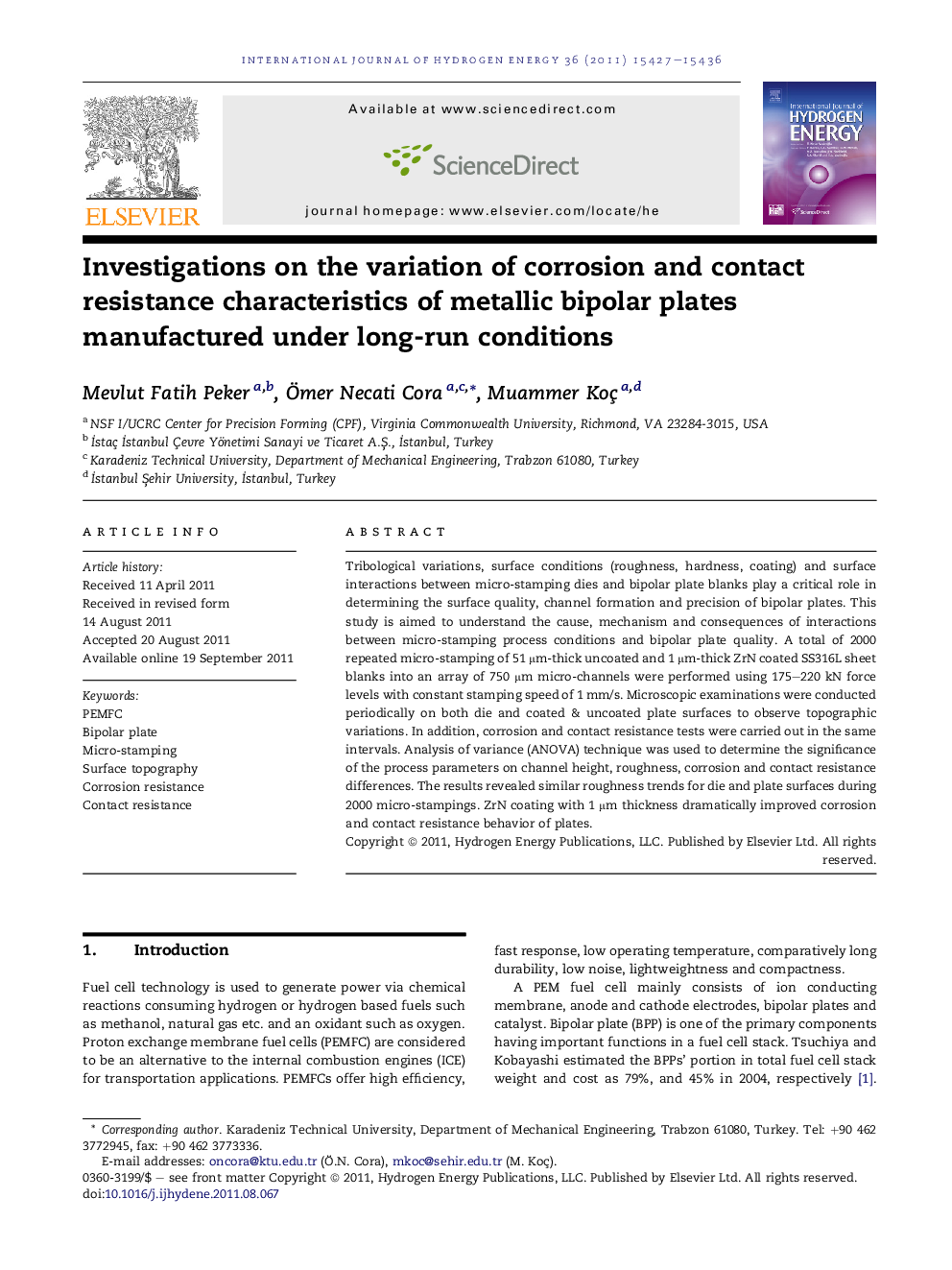| Article ID | Journal | Published Year | Pages | File Type |
|---|---|---|---|---|
| 1271836 | International Journal of Hydrogen Energy | 2011 | 10 Pages |
Tribological variations, surface conditions (roughness, hardness, coating) and surface interactions between micro-stamping dies and bipolar plate blanks play a critical role in determining the surface quality, channel formation and precision of bipolar plates. This study is aimed to understand the cause, mechanism and consequences of interactions between micro-stamping process conditions and bipolar plate quality. A total of 2000 repeated micro-stamping of 51 μm-thick uncoated and 1 μm-thick ZrN coated SS316L sheet blanks into an array of 750 μm micro-channels were performed using 175–220 kN force levels with constant stamping speed of 1 mm/s. Microscopic examinations were conducted periodically on both die and coated & uncoated plate surfaces to observe topographic variations. In addition, corrosion and contact resistance tests were carried out in the same intervals. Analysis of variance (ANOVA) technique was used to determine the significance of the process parameters on channel height, roughness, corrosion and contact resistance differences. The results revealed similar roughness trends for die and plate surfaces during 2000 micro-stampings. ZrN coating with 1 μm thickness dramatically improved corrosion and contact resistance behavior of plates.
► Effect of long-run micro-stamping of BPP plates on surface topography changes has been investigated. ► Effect of long-run manufacturing conditions on the performance of bipolar plates (corrosion and contact resistance) was revealed. ► Correlations between surface roughness and contact, corrosion resistance have been revealed.
